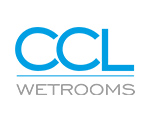As demand for properties rises in the UK and space becomes more and more at a premium, are developers and architects helping towards the extinction of the bath? There was a time where a bath in the home was a given. But more and more, it seems that showers and wetrooms are becoming more desirable.
Consumers are also becoming more environmentally conscious and time deficient, making a shower or wetroom a more attractive option. The average eight-minute shower consumes 62 litres of hot water, while a bath uses 80 litres. Over the course of just a week, you can save a whole bath full of water. Over a month, you’re saving enough water to have a real impact on your wallet.
Daily showering has almost replaced bathing as a way to get clean according to researchers. The analysis of 1,802 people in the South East of England was carried out by academics at the Universities of Manchester, Lancaster, Edinburgh and Southampton.
Bathing, they say, is almost extinct as a way of keeping clean. People have baths regularly only when there’s no shower unit available to use, or when it is part of a pampering and relaxation routine. Gone too are the bygone days of the flannel wash, something now practiced by only 29% of respondents, and which is now usually complementary, rather than an alternative, to a bath or shower.
Dr Alison Browne, who is based at The University of Manchester’s Sustainable Consumption Institute, said: “Our findings that nowadays, nearly three quarters of respondents have at least one bath or shower every day, means both policy makers and society as a whole really need to think about what it means to be clean.”
A recent Houzz poll also indicates that bathing in baths may be in decline. The poll found that 39% of 25-to-34-year-olds were willing to buy or rent a house that doesn’t have a bath.
Will having no bath affect the price of a property?
Some homeowners do worry about the resale value of their homes if they remove the bath. If you have multiple bathrooms, keeping a bath in one of them gives you flexibility. If you have toddlers or small children to bathe, a bath is a necessity. And of course, if soaking in the tub is your go-to way to relax, you might favour a property with a bath. However, a rapidly aging population and increased awareness of inclusive design is creating accessibility concerns over baths, with people more likely to favour a shower or a wetroom.
The resale value of a bathless house is difficult to gauge because half the people want one, and the other half don’t care. For instance, when a house is listed for sale, those who require a bath will see it missing from the listing and won’t bother to view the house. Also, it’s rare that someone buys the perfect pre-existing home. Modifications usually happen, especially in bathrooms, which, along with kitchens, are the most frequently remodelled parts of a house.
Still, to have or not have a bath is a very personal decision, so don’t let predictions of future trends keep you from having what you want and need right now. If you have decided to say goodbye to your tub, should you opt for a shower or a wetroom? You can check out the pros and cons of both right here.









